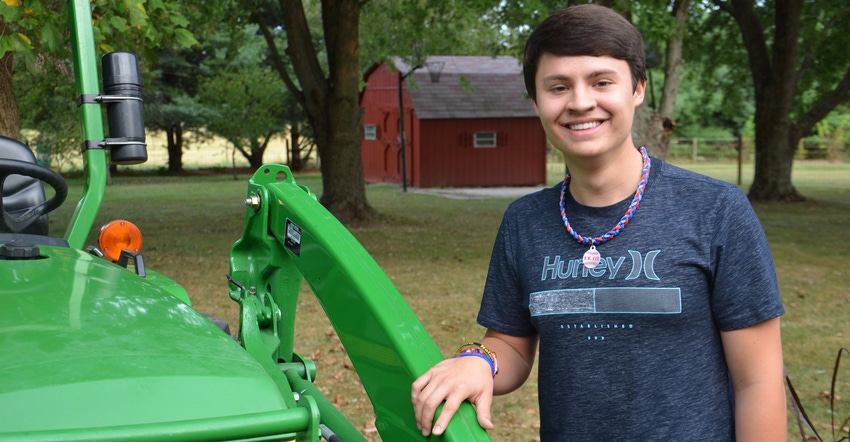March 13, 2021

Decades from now, what will the American farmer be like? This was the question posed by the 1976-77 Indiana FFA state officers. At their state convention, the officers made a presentation titled “Looking to the Year 2000.”
They spoke about climate-controlled domes, tractor control centers and transparent silos for cattle. They discussed many incredible and futuristic ideas they hoped would one day become tools to help feed a growing and hungry world.
When I found their script buried in our historical records, I was fascinated by their thoughts and opinions. To peer into the past through their words and appreciate how far we’ve come was an amazing gift.
Sharing in their curiosity, I wondered what the American farmers of the future will be like. What new devices and techniques will they use? And most importantly, what will we need to accomplish today to reach that agriculture of tomorrow?
The American farmer of 2050 will face many of the same challenges predicted by the 1976-77 Indiana FFA state officers. It’s believed that close to 10 billion people will occupy the planet in just 30 years.
To meet this growing population, agriculture will need to become exponentially more productive. Advancements in data analytics will allow us to monitor the performance of fields down to the individual plants.
More and more of our agricultural machinery will utilize thousands of sensors to collect information on soil health and weather conditions. The automation of today’s tractors will one day allow a computer program to process live field conditions and respond to situations completely on its own.
My crystal ball
Without any input from an operator, farm machinery will execute split-second decisions on fertilizer application and harvest size. To capitalize on efficiency, traditional tractors and combines will be replaced with swarms of small agricultural machines. Instead of stopping because of a single planter malfunction, a group of autonomous drones will continue to plant even when a few become damaged.
With a greater focus on sustainability, American farmers will produce their own energy through solar panels. The electricity not used to power the farmhouse and charge the battery-powered machines will be sold to the grid. Overall, the farm will become a hub of technological precision to produce the most food with the fewest resources in the quickest time possible.
While it’s hard to predict how many of these ideas will appear on a farm in 2050, it highlights an important point. The agriculture of tomorrow will ask more from the American farmer than ever before. Changing technology, a focus on sustainability, and a reliance on computerized data will require new skills.
If we hope to prepare our industry for this future, we must start today. Helping farmers to understand computer programming, teaching about autonomous machines and bringing more sustainability into our industry will set us on this path. Now more than ever, we must work toward the future we want for agriculture. And maybe one day we can look back and know we helped create it.
Williams is the 2020-21 Indiana FFA state reporter.
You May Also Like




